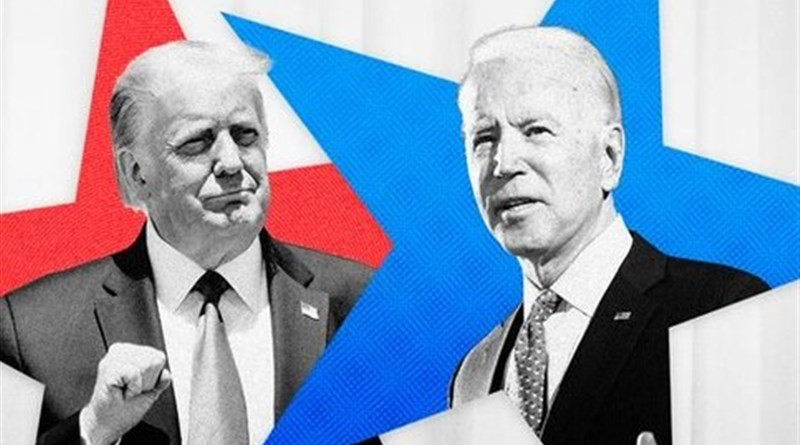America’s Frightening Choice – OpEd
By Sheila A Smith*
This election will shape the US role in the world for years to come. In Asia, this American choice is consequential. Asia’s geopolitics are complex and the currents of change are accelerating. Whereas partners could previously count on the United States to try to shape the regional balance of power, Trump has instead transformed Asia strategy into a series of tactical bilateral bargains.
The Trans-Pacific Partnership was abandoned early with real loss of competitive advantage to US industry, particularly agriculture. As the Trump administration turned its attention to an Indo-Pacific strategy, it seemed disconnected and, at times, dissolute. While US military goals in the region remain, economic and diplomatic tools have been underutilised. Bilaterals, with leverage in American favour, have strained enthusiasm for partnerships with the United States. Withdrawal of support for regional forums sent a profound message of US disinterest in a region where networking and consensus building relies on multilateralism. The Trump administration’s grievance diplomacy is puzzling at best as China’s diplomats and military unabashedly demonstrate their country’s newfound power.
It is clear that the Biden team is crafting a different approach to pursuing US interests in Asia. Team membership, led by Antony Blinken, includes an array of seasoned foreign policy experts who have served in government and who will be recognisable to colleagues in the region. This is a team that respects and utilises multilateral venues to US advantage, has a deep appreciation for the Chinese approach to power, and that understands that economic levers, as well as diplomatic and military ones, must be part of a holistic approach.
Four paths of divergence from the Trump administration’s approach are likely. First, whereas the Trump administration see allies as liabilities, a Biden administration would lead Asia policy with an allies-first approach. Second, the United States would again find common cause with others in the region in building networks and, where needed, institutions for collective action. Third, a Biden administration would integrate cooperation with Asian partners in addressing global challenges of the COVID-19 pandemic and climate change.
The biggest challenge will, of course, be China policy. Strategic competition has intensified. The trade war was an early manifestation of this new US approach. The Trump administration embraced an old-fashioned ideological antipathy and Beijing’s officials have not hesitated to follow suit. The Biden style will differ, but the sense of urgency in mobilising to meet the China challenge will remain. A recent headline in Axios brought this home: US China policy under Biden would be to ‘bring allies in’. Biden’s China advisor, Ely Ratner, co-authored a report arguing that the United States ‘will have to accept and acknowledge that rising to the China challenge will require difficult sacrifices and trade-offs’.
US–China tensions will continue regardless of electoral outcome. Chinese behaviour has invited much of this backlash in Washington, as it has around the region. Greater assertiveness in the East and South China seas has set its maritime neighbours on edge. Predatory trade and investment practices have made coercion the new method of economic statecraft. Competition in the next generation of technologies has also pitted a new, more authoritarian Beijing model against the liberal democracies. And Chinese officials have operated in ways that have invited rancour from across the Asia Pacific and beyond.
What is not clear is how this tension will develop. Ironically, the unpredictability of Trump’s presidency may offer the most predictable predication. A Trump 2.0 will accelerate confrontation, but with spats over trade and burden-sharing, it will likely also decrease allied confidence. Confrontation without a steadying United States at the tiller can only produce bad outcomes for most Asian states. Allies will be less secure and thus more likely to seek alternative sources of security and prosperity.
Another handicap of a second Trump administration would likely be the continued degradation of competency within federal agencies tasked with formulating and implementing foreign policy. Already in the first administration, an alarming number of policy positions have been left vacant or temporary assignment. More recently, the President has sought to remove longstanding protections for career civil servants to replace policy professionals with political loyalists. The Democrats have recently responded by arguing for a ‘bigger, better State Department’. Alliance management depends heavily on experts within this professional corps, as does strategic goal setting and implementation. The government’s ability to analyse and strategise will be sorely tested in Asia, and it will need to successfully implement its goals.
Less easy to predict is whether a Biden presidency can successfully navigate this moment of strategic choice. Even with a comprehensive Asia strategy and the restored trust of regional partners, the potential for error in the region’s increasingly stormy geopolitics is real. If this past year is any indication, the United States may struggle to keep afloat. There is little doubt that strategic competition with China will grow, and with it, greater confrontation between Washington and Beijing. Nor is there doubt that the United States can compete intensely, should it marshal its abilities for that task.
The rancour that has permeated our politics will not be solved in one election, and lingering resentments may impede the president’s ability to be attentive to the accelerating shifts in the regional balance of power. A distracted America may be Asia’s lot.
*About the author: Sheila A Smith is Senior Fellow for Japan Studies at the Council on Foreign Relations.
Source: This article was published by East Asia Forum

